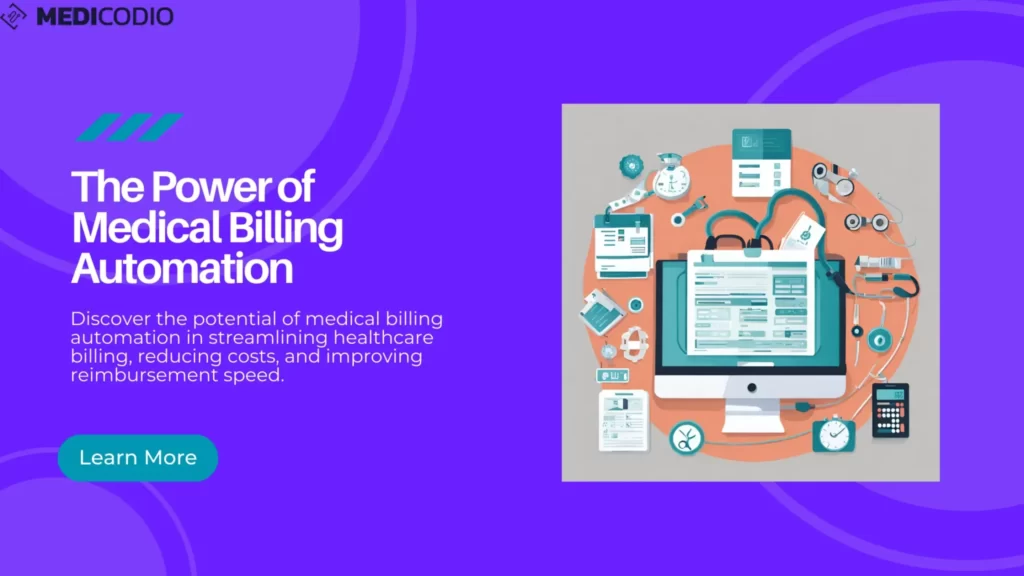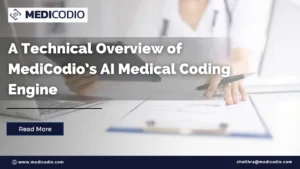The healthcare industry is going through a shift. We’re seeing the challenge of needing to cut costs after the pandemic while also meeting the rising expectations of patients who want faster and better customer service. In this scenario, medical billing automation holds a significant value in addressing both these needs.
But what exactly is it?
What is Medical Billing Automation?
Medical billing automation is the utilization of technology and software to streamline and simplify the billing process in healthcare organizations.
A step-by-step guide to the medical billing process
Medical billing is the process of submitting claims to insurance companies for reimbursement of healthcare services. It can be a complex and time-consuming process, but it is essential for healthcare providers to get paid for their services.
Here is a step-by-step guide to the medical billing process:
-
- Patient registration: When a patient comes in for an appointment, they will need to register at the front desk. This will involve providing their demographic information, insurance information, and copayment.
- Eligibility verification: Once the patient has registered, the medical biller will verify their insurance eligibility. This involves contacting the insurance company to make sure that the patient is covered for the services they are receiving.
- Medical coding: After the patient’s insurance eligibility has been verified, the medical coder will assign CPT (Current Procedural Terminology) and ICD-10 (International Classification of Diseases, 10th Revision) codes to the services that were performed. These codes are used by insurance companies to determine how much to reimburse the healthcare provider. Also read: AI-assisted E/M Coding
- Charge entry: Once the services have been coded, the medical biller will enter the charges into the billing system. This will include the CPT and ICD-10 codes, as well as the patient’s demographic information and insurance information.
- Claims submission: Once the charges have been entered, the medical biller will submit the claims to the insurance company for reimbursement. This can be done electronically or by mail.
- Payment posting: Once the insurance company has processed the claims, they will send payment to the healthcare provider. The medical biller will post the payments to the patient’s account.
Can medical billing be automated?
With the advent of advanced software solutions such as AI, RPA, and analytics, the dream of automating medical billing is a reality. Gone are the days of manually processing claims, as automation takes center stage. For example: With the emergence of an AI-powered medical coding solution, claims can be processed more quickly and payment can be issued faster.
What is the significance of Medical Billing Automation?
There are several advantages of automation in medical billing and coding. Here are a few points:
Streamlining Workflow
One significant aspect of medical billing automation is the ability to streamline workflows. This leads to quicker processing and reimbursement, minimizing human errors.
Reduced Costs
Automation reduces the need for extensive manpower, making it a cost-effective solution. It also ensures better utilization of resources.
Enhanced Accuracy
Automation ensures that billing codes are accurate, reducing the likelihood of denied claims and ensuring compliance with regulations.
What Is the Current Healthcare Billing Scenario?
In the current healthcare landscape, billing is becoming increasingly complex. From insurance verification to coding compliance, medical billing is a multifaceted process.
-
- The most recent data estimates that 80% of US medical bills contain errors. (Becker’s Hospital Review)
-
- 75% of healthcare providers mainly use paper and manual processes for collections. (InstaMed)
-
- Managing staff shortages is the major concern of provider CEOs. (American College of Healthcare Executives)
Why Is Automation Required for Medical Billing Systems?
Medical billing automation takes care of all the tedious and time-consuming tasks that humans are prone to making mistakes in. It also identifies and corrects errors before claims are submitted, which results in faster reimbursements from payers.
Here are some specific examples of how medical billing automation can improve the process:
Automatic patient registration and insurance verification: This can save staff time and reduce the risk of errors.
Automated medical coding: This can ensure that claims are coded accurately and completely, which can lead to fewer denials and faster reimbursements.
Electronic claims submission: This is a faster and more efficient way to submit claims to payers.
Automated payment posting: This can save staff time and reduce the risk of errors.

How to Automate Medical Billing for Faster Reimbursements?
Choose the Right Software
Select a reputable medical billing software that fits your organization’s needs, ensuring it’s compliant with healthcare regulations.
Data Integration
Efficient data integration across departments is key to automation success. A seamless flow of information reduces bottlenecks.
Staff Training
Invest in training your staff to make the most of the automation software, ensuring a smooth transition.
Choose the right medical billing automation solution
There are a variety of medical billing automation solutions available, so it is important to choose one that is right for your practice or hospital. Consider your specific needs and budget when making your decision.
Implement the solution correctly
Once you have chosen a medical billing automation solution, it is important to implement it correctly. This may require training your staff on how to use the system.
Monitor your results
It is important to monitor your results after implementing a medical billing automation solution. This will help you to identify any areas where the system can be improved.
How To Reduce Overall Billing Costs?
Reduced Manpower
Automation significantly reduces the need for a large billing staff, translating to cost savings.
Improved Claim Submission
Automation ensures claims are submitted correctly the first time, minimizing costly resubmissions.
Identify Cost-Cutting Opportunities
Analyze your billing processes to identify areas where automation can lead to cost reductions.
Streamlining Medical Billing Automation with CODIO
CODIO is an AI-powered medical coding tool that can help to streamline medical billing automation. CODIO developed by MediCodio uses AI to automate the medical coding process, which can free up staff to focus on other tasks. CODIO can also help to improve the accuracy of medical coding, which can lead to faster reimbursements and fewer denials.
In conclusion, medical billing automation is a necessity in the healthcare industry. It not only enhances efficiency but also significantly reduces costs and minimizes errors. Embracing automation with the right software, proper training, and a focus on cost reduction can lead to a healthier bottom line for your healthcare organization.
If you are looking for a way to improve your medical billing process, consider using medical billing automation. Automation can help you to streamline your processes, improve accuracy, and reduce costs.





